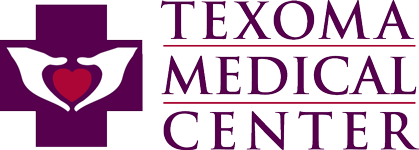Common types, causes, treatments and when to see a doctor
 “Headache” is a broad term used for any form of pain occurring in the face or head. Usually, we take them in stride and move on, but what are they really? And when should you be concerned that they might be signs of a serious issue? Whether your headaches are chronic or random, mild or severe, let’s discuss the possible causes and what you can do about them.
“Headache” is a broad term used for any form of pain occurring in the face or head. Usually, we take them in stride and move on, but what are they really? And when should you be concerned that they might be signs of a serious issue? Whether your headaches are chronic or random, mild or severe, let’s discuss the possible causes and what you can do about them.
Tension Headaches
The most common type of headache, tension headaches present as a tenseness or pressure around the head, face or neck. The cause? Tension headaches are often a result of stress, anxiety, a lack of sleep or intense work. If you find yourself waking up with tension headaches, sleep apnea may also be a culprit.
Cluster Headaches
Cluster headaches are sudden, severely painful headaches that occur in one area of the head or face at a time. They most often occur behind one eye or on one side of the head. Besides concentrated pain, telltale symptoms of cluster headaches are:
- Restlessness
- Nose and eyes on the affected side may swell or be teary
Like other kinds of headaches, cluster headaches can be triggered by alcohol, smoking and disrupted sleep.
Migraines
A migraine is a type of headache that’s recurring and involves moderate to severe throbbing pain. They often cause:
- Sensitivity to light, noise and smells
- Throbbing/pulsating pain
- Nausea and vomiting
- Weakness and exhaustion
Migraines are caused by the activation of nerve fibers in the wall of the brain where blood vessels travel in the meninges (layers of membranes protecting the brain and spinal cord). Migraine triggers vary for everyone, but hormonal fluctuations, drinking alcohol, stress, changes in sleep or medications are commonly to blame.
New Daily Persistent Headaches (NDPH)
New daily persistent headaches are moderate to severe and may begin for no apparent reason. They’re ongoing and don’t respond to common forms of treatment, like medication and rest. For some people, NDPH may last for months or years without ever subsiding. New daily persistent headaches are usually symmetrical, affecting both sides of the head. They’re described as a persistent “tightening” or “pressure.” They may also cause the following:
- Throbbing or pounding pain
- Sensitivity to light and sounds
- Nausea and vomiting
Because new daily persistent headaches strike so suddenly, it’s difficult to pinpoint why they begin to occur. It’s possible that NDPH is triggered by viral or bacterial infections.
Exertion Headaches
Exertion headaches occur during or immediately after physical activity. They may only last minutes to hours but can remain for days if left untreated. They’re often caused by exercise (especially in heat or humidity) and lack of sleep after intense work.
Treatment
Some commonly used remedies for headaches include:
- Over-the-counter pain medication
- Resting in a dark, quiet room
- Hot or cold compresses
- Going screen-free when possible (bright lights can aggravate a headache)
Headaches aren’t always cause for concern, but if you’re experiencing any of the following, call your doctor:
- Sudden, severely painful headaches
- Feeling worse than usual
- Slurring speech, fainting
- Numbness or paralysis
- A fever over 102 degrees Fahrenheit
- No improvement or worsening with at-home treatment
